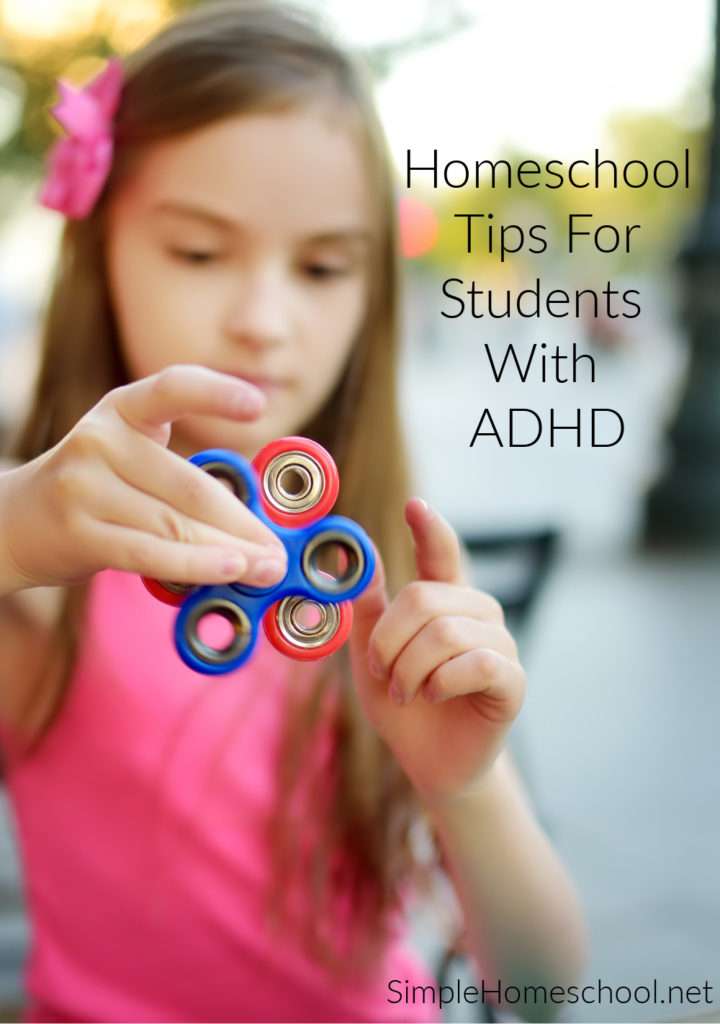Homeschool tips for students with ADHD ~
Written by Colleen Kessler of Raising Lifelong Learners
“He’s an EXTREME thinker,” exclaimed my oldest son’s preschool teacher the first time I met with her for a conference more than thirteen years ago. Since that day, I’ve endured all sorts of similar comments — some judgmental; some tinged with laughter — all of them related to his non. stop. energy.
My son was diagnosed with ADHD by the first of three psychologists we saw beginning when he was five. We’d later discover that his wasn’t truly ADHD, but hyperactivity and impulsivity that mimicked it, a result of his overexcitabilities stemming from profound giftedness.
But as ADHD and psychomotor overexcitabilities tend to need similar adjustments to learning environments and styles, we chose to pull him out of the public school system more than a decade ago so that we could meet those challenging and unique needs.
Homeschooling a child with ADHD can be a great way to adapt learning to their needs, and over the years we’ve found some things that work well as we try to tackle the ever-changing needs ADHD kiddos have.
Homeschool Tips For Students With ADHD
Stick with a regular routine. While a kiddo with ADHD may struggle with routine, it is an important practice for the future. Teaching your child about routine will help them to learn to be more focused. A flexible routine is important, but overall you should have one you try to stick to on a regular basis.
This doesn’t mean you should have your child waking up and sitting at a desk as kids do in public school — for us, that was the kiss of death when we first started homeschooling and I fell back on my public-school-teaching-past. It does, however, mean you need to help your child maintain a sense of control in the daily routine.
Routine trumps a structured schedule every time. When kids know that morning chores come before breakfast, then comes independent work, then group work, then lunch, then free time, then dinner, then bedtime, they know what to expect — regardless of how much time each activity takes.
Create short lessons. One of the best homeschool tips for teaching a child that has been diagnosed with ADD or ADHD is to adjust the activity times to suit their stamina. In a traditional school environment, most subjects are covered in 30-45 minute increments at a time. In a homeschool environment, you can focus on shorter class times that will work better for your child and their limited attention span.
Start with 15-minute sessions or activities. In between each 15-minute time block, give your child (and you!) brain breaks or a chance to stretch their legs. Play outside, grab a snack, take time to dance in the kitchen… any of these things can get you and your kiddo recharged to keep going.
Allow for movement. Like my son, your ADHD child probably needs to move all the time. In a school setting, this was a “behavior” that gets kids in trouble. Remember — homeschooling offers the flexibility to teach how a child needs to learn. Math facts on the trampoline? Absolutely! Reading while upside down on the couch with the dog curled in the lap and feet tap on the wall? Sure, why not!
Kids can also sit on exercise balls, fidget or hum while doing math, or do jumping jacks in between comprehension questions. Pick what works for your child. You have to think about the struggles your unique child has to determine what will work best for them in this situation.

Get involved in local homeschool groups. This is truly invaluable for most homeschooling parents. Including local homeschool group meetings into your homeschool schedule can make a huge difference in your productivity and the success of your child.
There are tons of options for homeschool groups to consider. Some are strictly co-op situations that are educational. Others are for field trips and playdates. Some, in light of the current situation we face during a pandemic, are only meeting online. Search for options in your city, county, and your state so you check out multiple options to see what works best for your kiddo.
Remember as you are adapting your homeschool — consider your child above all, and not just what others are recommending. Every child diagnosed with ADHD and ADD (or overexcitabilities) will have different struggles. Some will be physically more active, while others may struggle to concentrate on one subject for long time periods. The reason most parents choose to homeschool is to truly make education work for their child.
You’ve got this! Enjoy the adventure.
Oh! And that “extreme thinker” is now seventeen, entering his senior year of homeschooling as a fulltime college student, working towards a Bachelor’s in Computer Science. He also has an internship with the college program to develop a VR campus experience for other remote-learning students while running a freelance audio and video editing business from home.
He’s still an extreme thinker — but homeschooling allowed him to think in his own way, and thrive.
* Read more of Colleen’s work on Simple Homeschool here!
Do you have homeschool tips for students with ADHD? I’d love to hear them. Share below.
What’s Your Homeschool Mom Personality? Take Jamie’s quiz now and receive a free personality report to help you organize your homeschool based on what your personality type needs most!




 My personal experience using All About Reading with an older child
My personal experience using All About Reading with an older child
thank you! very interesting and helpful information for a mom beginning homeschooling for the first time.
PS- just so you know, in the picture at the end of the article, it shows the child playing with a fidget spinner…those have tested positive for high levels of lead. :/ Not great for anyone to ‘fidget’ with, especially children.
Really good tips. I’ve been homeschooling my son who has ADHD ever since the start of lockdown.
Lara Michael’s latest post: 7 Ways To Beat ADHD Winter Blues
I feel ya, i have 3 homeschooled boys with adhd… looking for all the tips i can get!!
Nadine @ Cnscenteraz’s latest post: The Different Anxiety Myths We’ve All Heard About